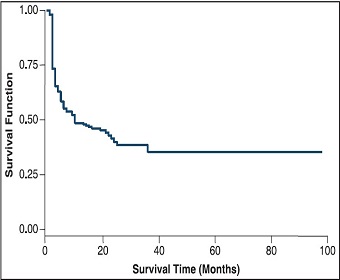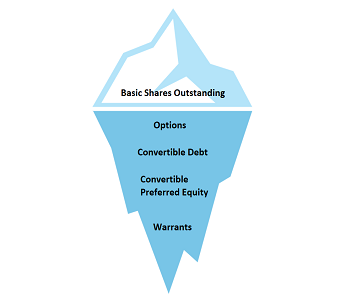One of the primary reasons that private companies go public is to lower the cost and increase the efficiency of raising additional capital. However, investors who are not privy to the workings of Wall Street often misunderstand or poorly understand the capital raising process. Here, we set out to explain a number of basic capital raising principles, as well as the public disclosures that investors can and should access for a better understanding of the financing process.
How Do Private Companies ‘Go Public’?
In order for a private company to become a public company, it must make its shares of equity (stock) available for purchase on a public market. Investors must understand two fundamental concepts: “What are public markets?” and “How does a company make its stock available for purchase on these markets?”
Public Markets
There are several public markets where a company’s stock can be bought and sold. These markets differ in terms of the level of regulation and oversight, and as a result, the quality of the companies whose securities can be traded on these markets as well.
An easy way to think about these different markets (stock exchanges) is to consider stock no different than any other good, such as clothes, shoes or food. You expect that certain stores, which are also a form of a market, will have more expensive and probably better products. You may visit other “markets” hoping to find a bargain.
This applies to equities as well.
The national securities exchanges, such as the New York Stock Exchange (NYSE) and the Nasdaq, have both quantitative and qualitative listing standards for companies that wish to trade their equity in a public setting.
In order to qualify for listing, these exchanges require that a company have a minimum amount of net tangible assets on its balance sheet, an example of a quantitative listing requirement. Meanwhile, these exchanges also require that a company maintain a board of directors comprised of a majority of independent directors, an example of a qualitative listing requirement.
As a result, if you purchase stock in a NYSE- or Nasdaq-listed company, you are buying a product that is expected to have met some minimum standards required by the exchange, or marketplace.
Most small- and micro-cap companies, at least when they initially become public, do not meet the quantitative listing standards required by the NYSE and the Nasdaq. Stock in these smaller public companies is usually traded on the Over the Counter Market (the “OTC”). The OTC is not one market but several. In past years, most of the trading on the OTC occurred on either the OTC Bulletin Board (the “OTC BB”) or the so-called “Pink Sheets”, which were a series of quotations published by the National Quotation Bureau that were actually printed on pink paper. Currently, most OTC trading in the U.S. takes place on the markets maintained by the OTC Markets Group, which include the OTC QB, OTC QX and OTC Pink Markets.
Like the larger listed exchanges, the OTC Markets Group maintains different standards for the markets which it administers. Companies that wish to have their stock trade on the OTC QB must be registered as a reporting company with the SEC and must maintain a minimum bid price for their stock. Companies that wish to trade on the OTC QX have to engage an investment bank or law firm to act as a chaperone on the market and must also maintain minimum quantitative standards to trade. Companies that wish to have stock trade on the OTC Pink Market need only have stock available to trade. As a result, stocks that trade on the OTC Pink Market are often the most risky for investors.
It is important for investors to note that stocks that are not traded on a national securities exchange and that have a stock price below $5 per share are considered “penny stocks.” Trading in penny stocks carries risk, not only because these are often smaller, less developed companies, but because the SEC, state, and market regulations make it more difficult to buy and sell these stocks. As a result, the market for penny stocks is frequently less liquid; it may be harder to sell these stocks once you’ve purchased them.
How does a Private Company become a Public Company?
In order for a company to become public, it must make a portion of its stock available for purchase and sale in a public market. To do so, the company can either register stock with the SEC for sale to the public, or stock that was sold privately can become available for resale publicly under certain circumstances.
Initial Public Offering (IPO) – Perhaps the most common way for a company to become public is to conduct an initial public offering (“IPO”). To conduct an IPO, a company registers its stock with the SEC for sale to the public on a form known as a registration statement. Most companies use Form S-1, which is the standard form of registration statement for domestic companies. The S-1 includes a prospectus, which is legally required to be delivered to all investors that purchase stock in the IPO. The S-1 contains information regarding the company’s business plan; its financial statements; biographical information about its management and board of directors; and risk factors regarding the business that investors are encouraged to review carefully. Twitter (TWTR), for example, used Form S-1 to become public through an IPO in 2013.
Similar to Form S-1 is Form F-1, which is used by foreign companies to list their stock for trading in the U.S. Form F-1 is substantially similar to Form S-1 although some of the information required to be provided by the company is different. For example, the financial statements required by Form F-1 do not have to be presented in accordance with U.S. Generally Accepted Accounting Principles (“GAAP”). Rather, a foreign company can use its local accounting standards or international standards, such as IFRS. The Chinese mega-commerce company Alibaba (BABA) went public using Form F-1 in 2014.
Most larger companies that become public through an IPO are underwritten by an investment bank or several investment banks working together in a syndicate. When an offering is underwritten it means that the underwriter or the syndicate has agreed to purchase the stock being sold and to resell it to the public in the IPO. The underwriter earns its fee in the difference between the price that it buys the stock from the company and the price at which it resells the stock to the public. This price difference is known as the “underwriter’s discount.” Both the company and the investors are relying on the underwriter to determine the proper price for the company’s stock in the IPO. Additionally, investors assume that the underwriter has conducted extensive due diligence with regard to the company’s business, as it also has liability and reputational risk if the company or the stock does not perform as expected. Most underwritten IPOs occur directly onto the Nasdaq or NYSE.
Many smaller companies are unable to attract an investment bank to underwrite their stock in an IPO. These companies must find alternative methods to the traditional IPO if they want to become public. Investors should be aware of these alternative methods and the potential risks that they pose to both the company and its stockholders.
Best Efforts Offerings – A growing trend in the small cap markets is the so-called Best Efforts Public Offering. In contrast to an underwritten offering where the underwriter commits to purchase the stock before it is resold to the public, in a best efforts offering, the investment bank only agrees to use its “best efforts” to sell the stock to public but does not put its own capital on the line to ensure that the offering will be sold. Thus, the investment bank is not an underwriter but a selling agent. These offerings do share some of the advantages of a traditional underwritten IPO. For example, assuming successful completion, very often these transactions result in a listing directly onto Nasdaq or NYSE; the investment bank has priced the stock; the investment bank is likely to have completed extensive due diligence on the company’s business; and the investment bank does have liability and reputational risk if the company or the stock do not perform as expected. On the other hand, these offerings tend to be smaller than traditional underwritten IPOs, which could result in a less than fully funded company, and they tend to get less attention from equity analysts, which can result in a weaker market for the stock. An example of a successful best efforts offering onto Nasdaq is Oxbridge Re Holdings Limited (OXBRW), which completed its IPO in 2014.
Self-Underwritten Offerings – Many companies choose to go public even if they cannot attract an underwriter or a selling agent. These companies may choose to become public through a self-underwritten offering. A self-underwritten offering simply means that the company has chosen to file a registration statement registering its shares for sale without the support of an investment bank. Investors should be very cautious when investing in a self-underwritten offering for a number of reasons. These offerings are almost always conducted onto one of the OTC Markets rather than a listed exchange. Because there is no investment bank, investors cannot assume that anyone has conducted thorough due diligence with regard to the company’s business, nor is there a third party that assisted in pricing the stock fairly. Finally, companies that become public without the assistance of an investment bank have very little, if any, support from analysts and other market professionals in developing a liquid market for their stock.
Reverse Merger – Yet another method to become public other than a traditional IPO is by reverse merging a private company with an already public shell company. In recent years, this method, known as a reverse merger or an RTO, has come under immense scrutiny from regulators, market watchdogs and plaintiff attorneys for some very good reasons. When a company reverse merges with an existing public company, it inherits the legal history of the existing public company, as well as its existing shareholders. Unlike an IPO or a self-underwritten offering, the company is not required to register its stock on Form S-1 or F-1 with the SEC before it becomes public. The registration process, during which the SEC staff reviews the registration statement, is one of the key protections for investors in the going public process. In a reverse merger, the information normally contained in the registration statement does not become available until after the company becomes public when it is published in a Form 8-K. Investors in a company that has recently become public through a reverse merger should also be aware that they may be purchasing shares from a shareholder that invested at a significantly lower price prior to the reverse merger. Reverse merged companies are often vehicles for “pump and dump” schemes where investors that purchased low-priced stock are able to inflate the price of the stock following the reverse merger through aggressive press campaigns, and then sell to new investors at these higher prices. It is for this reason that both NYSE and Nasdaq have adopted seasoning rules that require a company that completes a reverse merger to publicly report for at least one full year prior to applying for listing on NYSE or Nasdaq.
Form 10 Registration – Perhaps the least well-known method for going public is the Form 10 registration. Actually, a Form 10 registration does not necessarily mean that a company’s stock will be available to trade publicly because Form 10 cannot be used to register stock for sale publicly. Some explanation is in order here. Forms S-1 and F-1 are registration statements that register stock to be sold pursuant to the Securities Act of 1933 (the “33 Act”). Form 10 is a registration statement that registers a class of shares to be reporting pursuant to the Securities Exchange Act of 1934 (the “34 Act”). Once a company has a class of securities registered under the 34 Act, it is required to file periodic reports, such as Form 10-K annually and Form 10-Q quarterly. All companies that file 33 Act registration statements automatically become subject to the reporting requirements of the 34 Act for at least a year following effectiveness of the registration statement, and most opt to register their common shares under the 34 Act permanently. What this means, however, is that if you invest in a company that is “public” because it filed a Form 10, there may not even be a public market in which to resell your stock until the company either files a 33 Act registration statement or enough time passes that certain shares of its restricted stock becomes eligible for resale under one of the available safe harbor provisions, such as Rule 144.
This article is the result of collaboration between PropThink and Hunter Taubman Weiss, LLP. Author Louis Taubman is a partner in the New York office of Hunter Taubman Weiss, LLP, a boutique firm focused on securities law, corporate finance, and corporate governance. Mr. Taubman represents issuers, investors, and broker dealers in connection with “going public” transactions; private & public finance; and providing counsel to issuers and institutional investors with regard to the set-up and implementation of public structures for both domestic- and foreign companies. Mr. Taubman provides counsel on proper SEC reporting requirements, as well as related issues of corporate compliance and governance. Mr. Taubman also assists companies with their initial listing on the Nasdaq, NYSE-AMEX, OTCQX and other markets and exchanges, as well as ongoing compliance with exchange requirements. The material contained in the article may represent attorney advertising.




